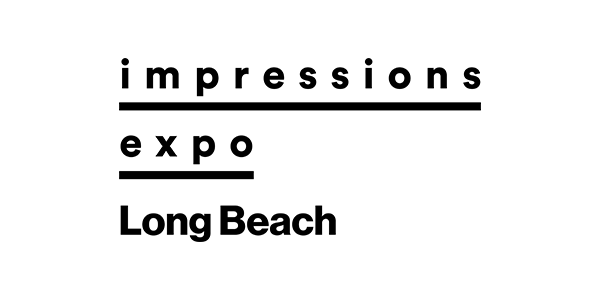
Ricoma CEO Henry Ma. Photo courtesy of Ricoma International
In a wide-ranging Q&A with Impressions Content Director, Adam Cort, Henry Ma, CEO of Ricoma International shares his thoughts on everything from advice for entrepreneurs entering the custom apparel market to strategies for building a client base and why the custom apparel business can be such a satisfying one. For more on Ricoma, and its wide-ranging line of embroidery, DTF, DTG and heat-pressing equipment and materials, go to ricoma.com/US.
Adam Cort: What inspired you to get involved in the custom apparel industry, and what makes it such a great opportunity for entrepreneurs today?
Henry Ma: I grew up surrounded by the custom apparel industry, and I saw a unique opportunity to make custom apparel equipment more accessible to entrepreneurs, empowering them to unleash their creativity. Back then, the industry lacked the abundance of information that’s readily available today, and we wanted to be pioneers in sharing this knowledge with the average consumer.
Over the last decade, technology has advanced tremendously, making equipment far more affordable and accessible than ever before. This evolution has created an incredible opportunity for aspiring entrepreneurs to step into the industry with the tools and guidance they need to succeed. By bridging the gap between accessibility and education, we aim to help others turn their passion for custom apparel into a thriving business.
AC: How has the custom apparel industry changed over the years, and what do you think makes now a good time to start a business in this space?
HM: Custom apparel equipment and technology have evolved over the years, with new decoration technologies emerging and features that make it easy for consumers to operate the machinery. The affordability of the equipment needed to get started in the custom apparel industry is one of the reasons why now is a good time to start a business in this space. On top of that, the communities of people that share information and insight about the industry has also grown tremendously over the years. People in this industry are very willing to help one another and that level of access to support within a large community helps newcomers avoid common pitfalls and have a higher chance of success.
AC: What are the essential pieces of equipment someone needs to get started with custom apparel?

A high-quality heat press is critical to custom apparel decorating for use in a wide range of applications. Photo courtesy of Ricoma International
HM: To get started with custom apparel, there are a few essential pieces of equipment that can set you up for success. A heat press is a must-have—it’s one of the most versatile and cost-effective tools for beginners, especially if you’re on a tight budget. You can easily purchase ready-made transfers online at a low cost, like with our new DTF (direct-to-transfer) program, and press them onto garments, allowing you to start creating custom apparel with minimal upfront investment. Plus, a heat press is crucial for many printing methods, such as direct-to-garment (DTG) printing, where it’s used to cure the design. It’s also great for prepping garments by smoothing and drying them before any application, ensuring a professional finish.
Once you’ve mastered the basics, an embroidery machine is a great next step. Embroidery is considered a premium decoration method with higher perceived value, which means higher profit margins. Unlike printing, embroidery offers unmatched durability and longevity, making it a favorite for professional uniforms, caps and other high-end products. If you can master embroidery, you open the door to a highly profitable segment of the custom apparel market that sets your business apart.
Starting with these two tools—a heat press and an embroidery machine—provides a solid foundation to grow your business while diversifying your service offerings and maximizing profitability.
The Right Decorating Equipment for Your Custom Apparel Company
AC: How do you decide between different equipment options like embroidery machines, DTF printers, or DTG printers for a new business?
HM: Choosing between equipment options like embroidery machines, and DTF printers or DTG printers depends on your business goals, target market and desired results. Each option offers unique benefits, so understanding your needs is key.

Direct-to-transfer systems, like the Ricoma Luminaris DTF Printer, can be used to customize a wide range of articles. Photo courtesy of Ricoma International
DTF printers are excellent for high-volume production, as they can print over 100 transfers per hour. This makes them ideal if you have a steady stream of clients or large orders to fulfill. However, DTF does require an additional step of heat pressing each design onto the garment.
DTG printers, on the other hand, print directly onto the fabric, producing slightly longer-lasting prints compared to DTF. Both methods offer high-quality, durable results, but DTG requires garments to be pre-treated (or purchasing pre-treated apparel), adding an extra step. Printing services like DTF and DTG are in high demand due to their ease of use and vibrant results. However, they face stiff competition since printing is easier to learn and more widely offered.
Embroidery machines, while requiring a higher skill level and learning curve, can set your business apart. Embroidery is a premium, timeless application that offers unparalleled durability and perceived value. The market for embroidery tends to be less saturated than printing, which can lead to higher margins. If you’re willing to master embroidery, you’ll be able to offer a service that stands out as both high-quality and long-lasting.

Systems like the Ricoma Vision DTG-Printer are easy to use and provide stunning results . Photo courtesy of Ricoma International
Ultimately, your choice should align with your business model. For example, if you’re creating simple tourist tees or vacation merchandise, a heat press with pre-made transfers might suffice. But if you’re targeting high-end corporate clients or creating premium, custom designs, embroidery or DTG printing could be a better fit. Starting with a clear vision of your target market and production goals will help you choose the equipment that’s right for you.
AC: What initial investments should someone expect when starting a custom apparel business, and what are some tips to manage costs?
HM: Starting a custom apparel business requires thoughtful investments, but with smart planning, you can manage costs effectively. The biggest initial expense is equipment, which depends on your focus. For instance, a heat press is an affordable starting point, allowing you to create a variety of products with minimal investment. If you’re aiming for higher-value offerings, embroidery machines or printing equipment like DTF or DTG printers are excellent options, though they come with higher price tags.
You’ll also need materials like blanks, thread, ink or transfer films, which are essential for your production process. To manage costs and ensure you never run out when you need them most, Ricoma offers a convenient Subscribe and Save program. This allows you to have these supplies delivered on a schedule that works for you while saving a little on each order, keeping your operations running smoothly and efficiently. You should also create a wholesale account to ensure you’re maximizing your savings on blanks.
Marketing and Standing Out in the Custom Apparel Market
AC: What’s the best way for new business owners to stand out in a competitive market and what are some initial marketing tips that you recommend?
HM: For new custom apparel business owners, standing out in a competitive market is all about leveraging your unique strengths as a small business. One of the best ways to differentiate yourself is by focusing on custom, personalized work. Large businesses often lack the time and flexibility to handle small, detailed custom orders, but as a small business, you can fill that gap by offering tailored solutions that meet specific customer needs. Whether it’s one-off designs, intricate embroidery, or fast turnaround times for small orders, your ability to cater to unique requests can set you apart and create loyal customers.
Another key advantage is providing exceptional, personalized customer service. While larger companies may struggle to maintain a personal touch, you can go above and beyond by building relationships with your clients. Take the time to understand their needs, offer guidance on design choices and provide proactive updates on their orders. This level of care not only creates a positive experience but also encourages repeat business and word-of-mouth referrals.
From a marketing perspective, start by tapping into your local community. Partner with small businesses, schools or organizations that need custom apparel. Word-of-mouth referrals from satisfied customers are incredibly powerful, so focus on delivering quality work that gets people talking. To expand your reach, optimize your online presence by creating a professional, SEO-friendly website with examples of your work, easy ways to contact you, and clear calls to action.
Social media is another invaluable tool for showcasing your capabilities. Post consistently on platforms like Instagram, Facebook and TikTok, and highlight your custom projects, behind-the-scenes processes and customer testimonials. Engage with your audience regularly to build trust and community.
Once you’ve built a strong foundation through referrals, local partnerships and organic social media efforts, you can explore paid advertising to scale your reach. By focusing on personalized service, custom work, and community connections, you can carve out a niche that helps your small business thrive, even in a competitive market.
AC: What are the common challenges new entrepreneurs face in the custom apparel industry, and how can they overcome feeling overwhelmed by technical aspects like digitizing or learning how to use equipment?
HM: One of the most common hurdles new entrepreneurs face is feeling overwhelmed by the technical aspects of the business, like learning how to digitize designs or operate equipment. This is completely normal—no one starts as an expert, but with persistence and the right tools, you can gain the skills you need to succeed.
The key to overcoming these challenges is leveraging the resources available to you. For instance, many equipment manufacturers, like Ricoma, provide comprehensive training and support to help you get started. This includes free onboarding sessions, live training with an instructor and extensive libraries of tutorial videos that walk you through everything from operating your machine to mastering digitizing software. Additionally, joining online communities of other business owners in the industry can provide invaluable support. Platforms like Facebook groups or industry forums allow you to ask questions, share experiences and learn from others who have been in your shoes.
Another common challenge is managing the learning curve while still delivering quality products to your customers. My advice here is to start with simpler projects while you build your confidence and skills. You don’t have to take on everything at once—focus on mastering one process at a time.
When it comes to digitizing, many beginners find it intimidating at first, but with practice, it becomes second nature. If it feels like too much to tackle right away, you can outsource your digitizing to professionals while you focus on growing your business. Over time, as you gain more experience, you can bring digitizing in-house to have more control over your designs and cut costs.
Finally, time management and balancing all the moving parts of a business can be tough for new entrepreneurs. To stay organized, create systems for scheduling, pricing, and order management. Many businesses overlook the importance of having these foundational processes in place, but they make a huge difference in managing your workload and reducing stress.
Scaling Up Your Business
AC: How can a small custom apparel business scale up and successfully expand into additional services?
HM: Scaling up a custom apparel business starts with diversification. Once you have a steady flow of clients, expanding into additional services is one of the best ways to grow your revenue and customer base. For example, if your business is primarily focused on embroidery, adding DTF printing allows you to cater to a wider range of customer needs, from high-volume printed designs to more intricate embroidery projects. Offering both services gives your clients more options and positions your business as a one-stop shop for custom apparel.
To make this transition smoothly, start by analyzing your customer base and identifying the most in-demand services. If many of your clients are asking for printed designs, DTF printing is a natural next step.
Investing in new equipment can feel daunting, but many suppliers offer training and support to help you get started. Focus on mastering the basics of the other service and leverage your existing reputation and relationships to market your new service. Reach out to your current clients and let them know you’re expanding your offerings. This not only drives immediate business but also reinforces your position as a versatile and reliable provider. Scaling doesn’t have to mean overextending—expand strategically by introducing services that align with your current operations.
AC: What’s the most rewarding part of starting a custom apparel business?
HM: Although I don’t run a custom apparel business myself, I’ve had the privilege of working closely with thousands of entrepreneurs in this industry, and I often hear directly from our clients about what makes it so rewarding. The most fulfilling part, they tell me, is the ability to bring ideas to life and see their creativity turned into tangible products that people love. There’s a unique sense of pride in creating something that brings joy and meaning to others.
Another rewarding aspect is the freedom and flexibility that come with running your own business. Many of our clients talk about how this industry allows them to take control of their future, set their own schedules and build something that aligns with their passions. It’s also incredibly gratifying to watch their businesses grow, from taking on their first client to expanding their offerings and achieving financial independence.
AC: What advice would you give to someone who is passionate about custom apparel but hesitant to take the leap into entrepreneurship?
HM: If you’re passionate about custom apparel but hesitant to take the leap into entrepreneurship, my advice is simple: just start. Don’t overthink it, don’t wait for the “perfect” time—because the perfect time doesn’t exist. The truth is, you’ll never feel 100 percent ready, and that’s okay. What matters is taking that first step.
Many people let fear of the unknown or lack of experience hold them back, but here’s the thing: you’ll figure it out as you go. You don’t need to have everything mapped out or be an expert from day one. Start small—get a heat press or an embroidery machine, take on a few orders, and let the process teach you. The beauty of this industry is that you can start part-time or even from your home and grow at your own pace.
You’re not alone, either. There are countless resources, communities, and support systems to help you succeed. You don’t need to have all the answers to get started—you just need to believe in yourself enough to take that first step.
For more on Ricoma, its complete line of custom apparel-decorating equipment and materials, and its extensive training and financing resources, click here.





